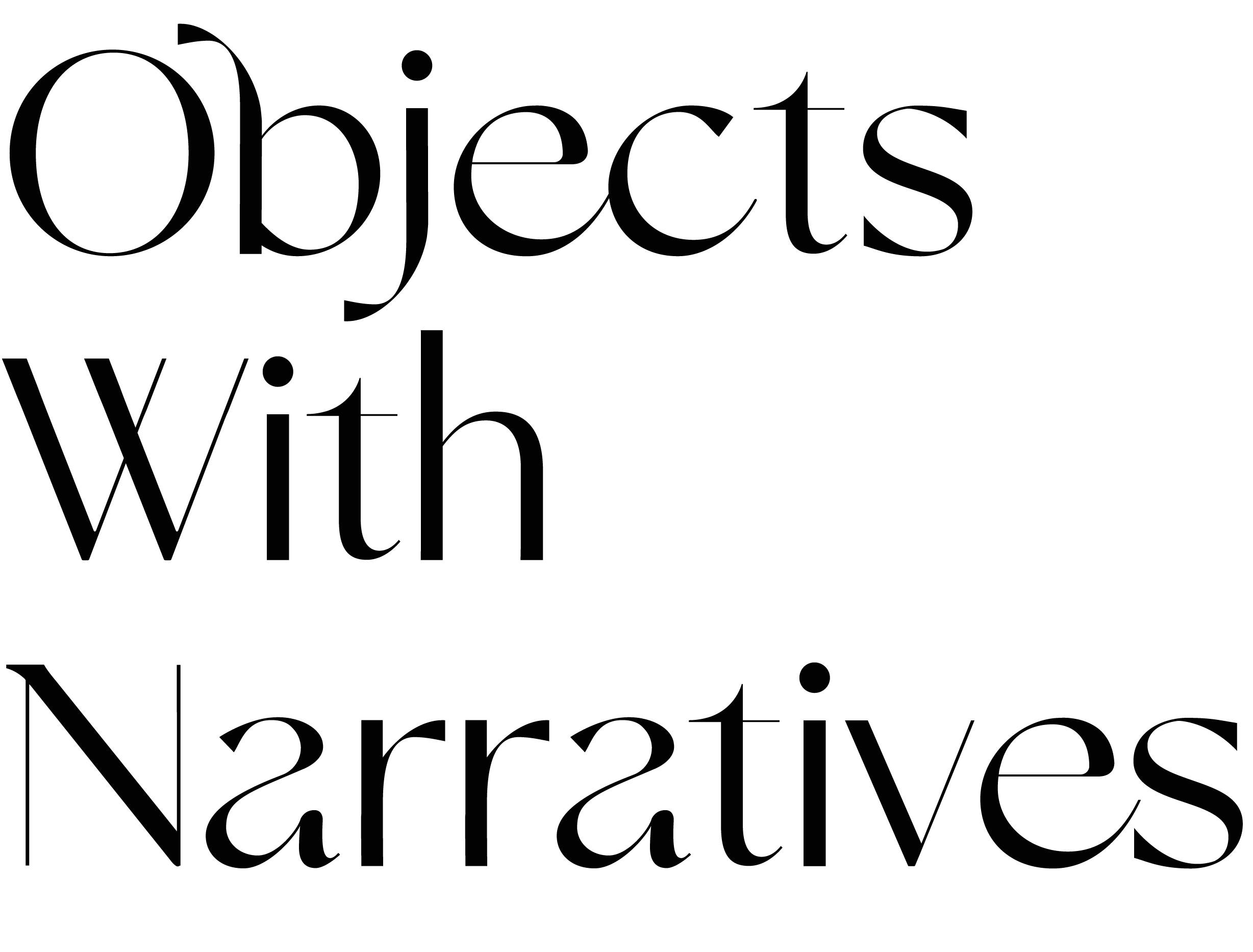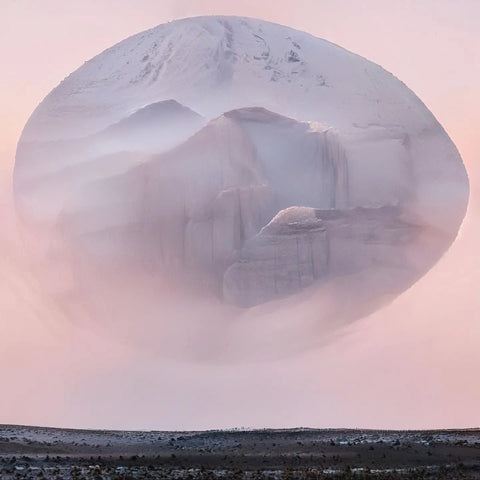
Can you tell us your thoughts behind this series?
From an exhibition point of view it is an experiment in how to translate something virtual into something physical. When an image is bought it will only be printed once, ever. They will be reproduced but treated like a painting. One motif, one thought, one object. Buying the image means buying the thought behind it. It is now yours. As for the ideas in the images, two key themes are meaning and category. The relation between an image and its meaning is similar but a bit different from the relationship between a word and its meaning. Both an image and a word give rise to associations as to what they are when we summon them. If I say boat you see a boat in your mind. If I show you a boat you think ‘boat’ and the associations that you have to boats. Maybe you used to have one as a kid, maybe a certain model that you like comes to mind. Maybe you like wooden ones and know a thing or two about the components that are assembled to create the object ‘boat’. All of these associations color what boat means to you and both image and word can make at least some of these associations erupt into your consciousness. You know what a boat is. It has a clear identity. You can tell the difference between a boat and an orange.
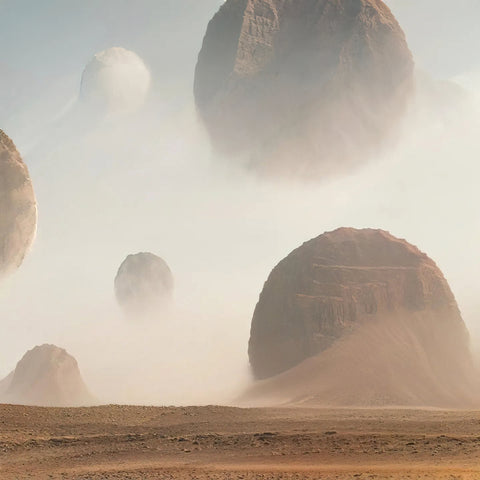
And what do you propose is the difference between image and word?
One difference with an image is that you can tell a convincing story of something nonsensical like a boat-chair. Saying boat-chair is uninteresting and perhaps the image would also be. But there are interesting objects of duality that live in the borderlands between two categories and they are better expressed with a single image than a single word. There is a specific effect that is achieved when we encounter these chimeras and Magritte was dealing with these ideas in paintings such as The Banquet and Bloodletting. In both paintings he shows you an object that can have two readings at once and this provokes a sense of mystery when the viewer is able to see both and dance back and forth between
them.


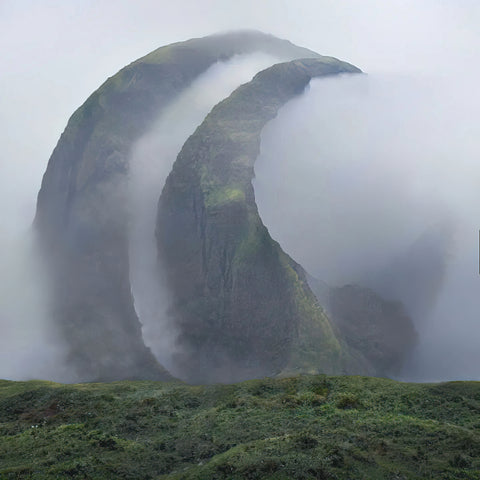
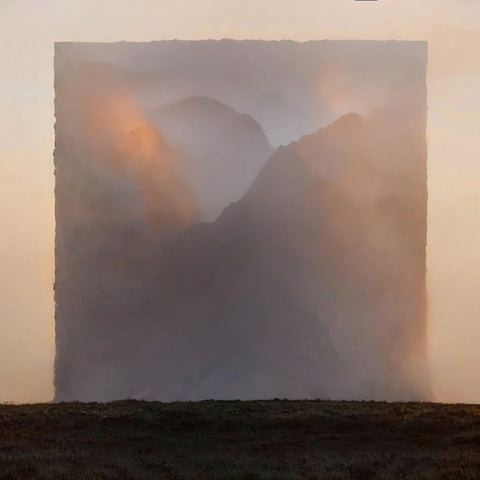

Can you tell us a bit more how this relates to your images?
Imagine that what gives a mountain its identity, the thing which makes us perceive it as a mountain, is a box with four walls and this box is filled with a fluid. The fluid is the substance that makes you understand that the object is a mountain. The walls are the category that we have created in our mind. The category bundles many different specific things we see in life into one general thing. When a mountain acquires the shape of a circle the walls that hold its identity contained start to collapse and the substance of something else starts to flood the space. The object we are looking at, its property of being mountain is put into question. We know mountains to look different. Yet it retains enough of its original mountain-substance that we recognize it as such. By starting to demolish the walls between categories and letting their substance flow into each other I want to provoke you to rethink the relationship between category and the form it comes attached to. I want to show our categories by showing where they break.
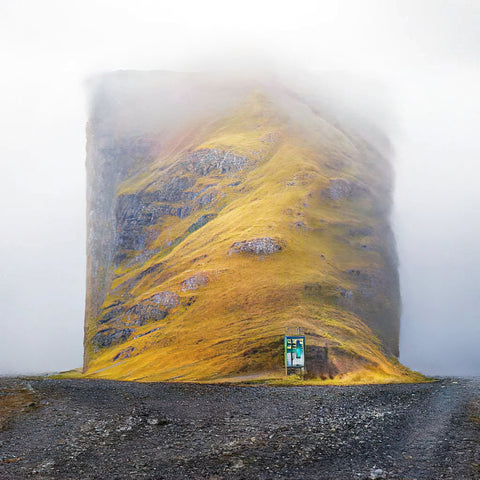
Is there an intention beyond examining categories?
There is an opportunity for new meaning when you put a category in a new container, for example when you exchange the irregular shape of a normal mountain to a sphere. We are in a position to create meaning because we have made the identity of the object uncertain. We want to fill the gap between what we see and what we know. The titles of my images aim to close this gap by creating new metaphorical associations to the object we are looking at. The melting of things into one another grabs our attention because at face value we cannot quite make sense of it, but it is clearly there and we see it, so what is going on? I think there are at least two things going on. When I think about this during the daytime I would say that we define categories in our minds that are not arbitrary because we re-experience these categories time and time again. So when we are presented with something that calls them into question we might be excused for having these strange objects grab our attention.
If you instead ask me at night when my state of mind is more dreamy I would like to follow in Magritte’s footsteps on mystery and say that perhaps why we experience mystery when looking at these kinds of objects is because we gain a glimpse into the primordial unity. When an object is assembled out of contradictory parts yet reads like something real we successfully unite two separate concepts. I will clarify: Nietzsche spoke about the dionysian. We can see it as a principle that dulls the separation between distinct objects. When we drink we spontaneously strike conversations with strangers. The border between us as a distinct individual and others is blurred and this makes us more spontaneous. We become less separate from and more united with others. Hence Dionysus is the god of wine, because intoxication has dinoysian properties. Dionysus is also the god of duality, of opposites. He is the mad god because when everything merges into one in primordial unity, contradictions unite and make sense. So paradox makes sense in his realm which makes him mad. In an image where a mountain is round I believe we get a visual representation, a scent, of how it is possible for a paradox to make sense. Perhaps we encounter mystery in these images because they allow us a momentary gaze into the cosmos of a Greek god.
